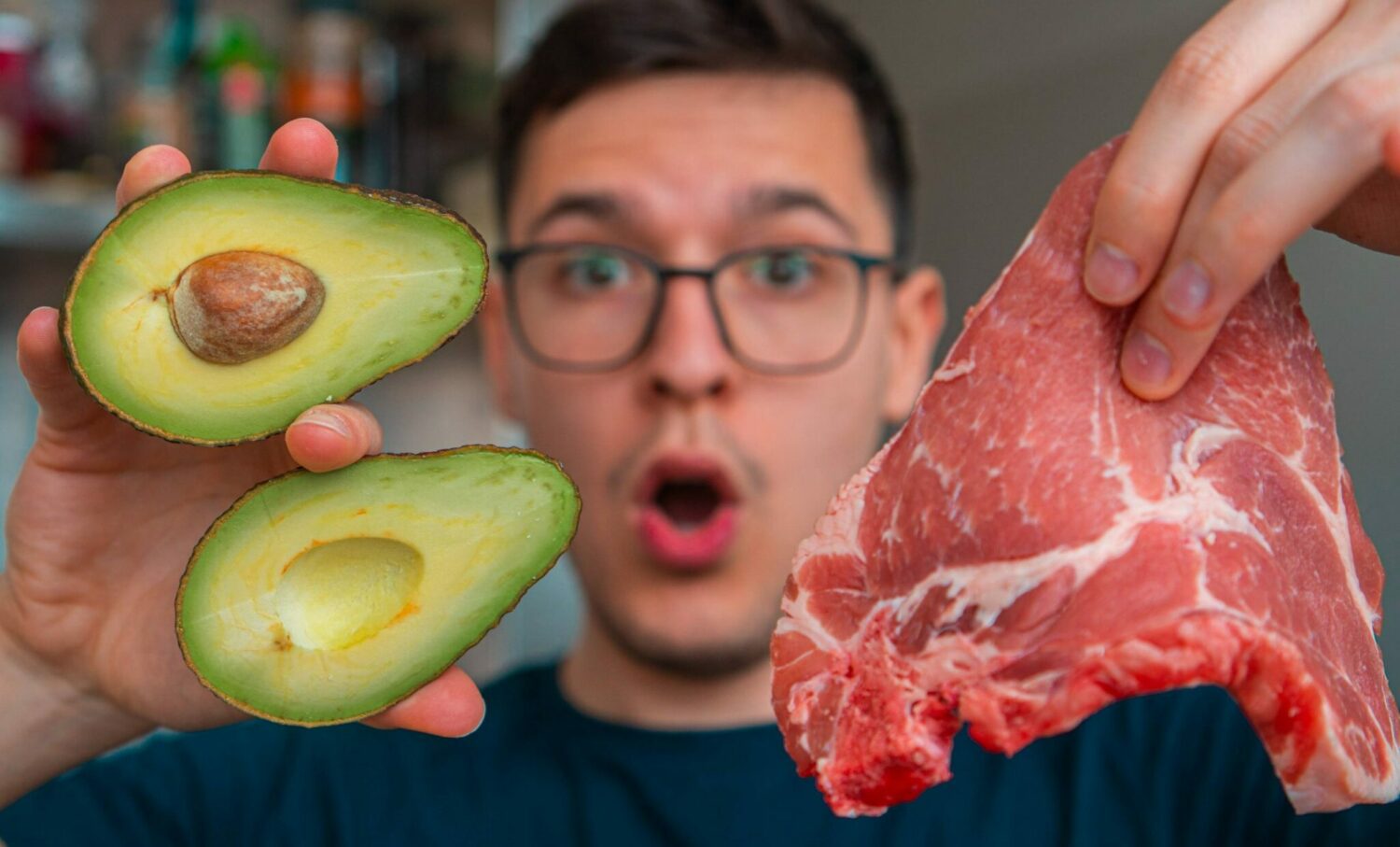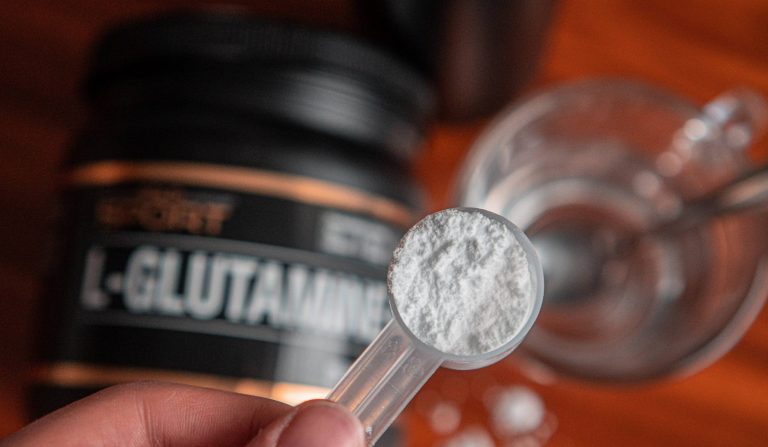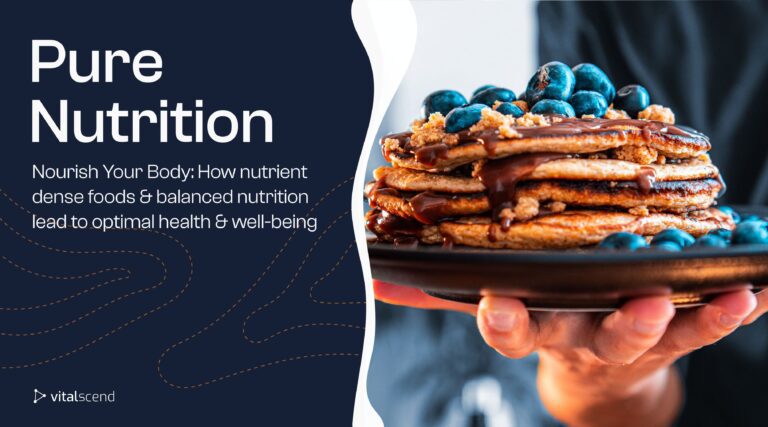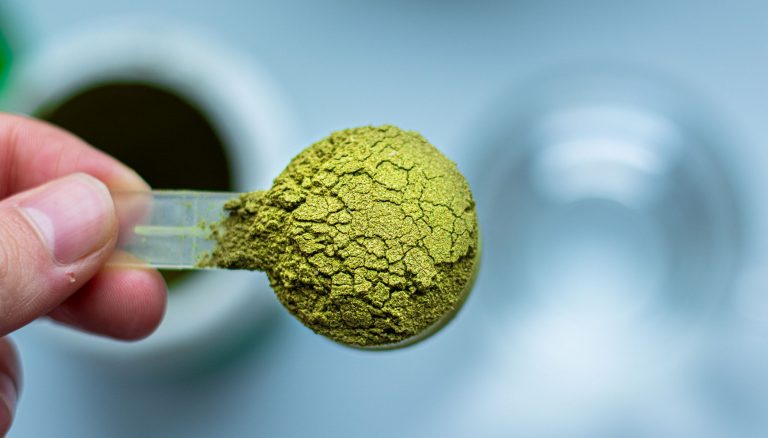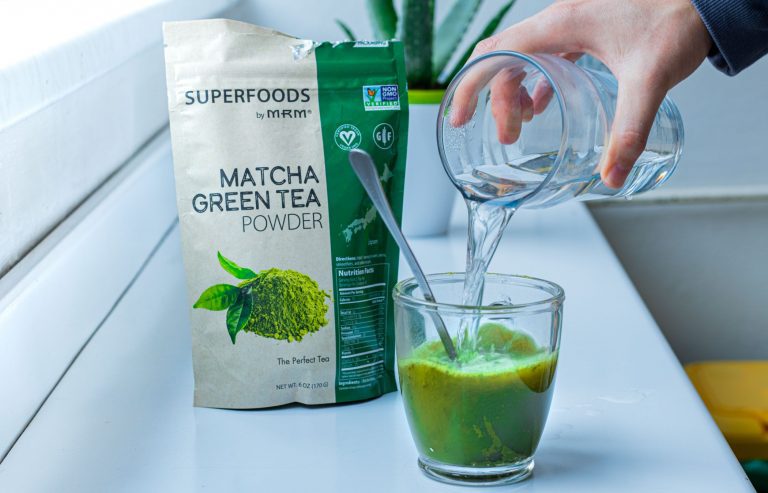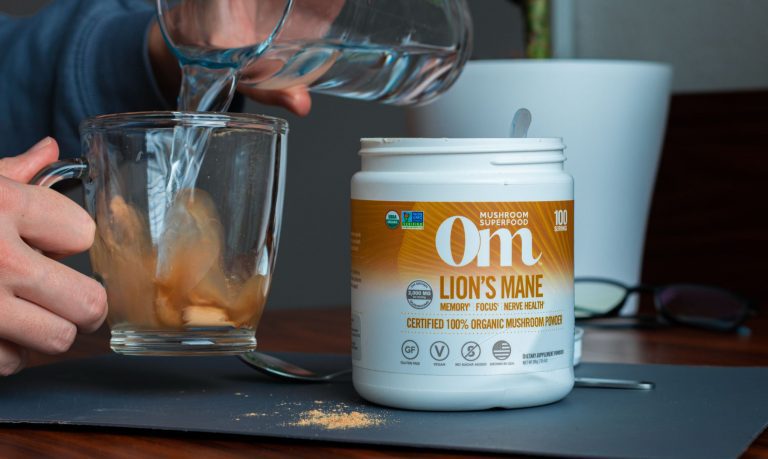Unsaturated vs Saturated Fats: Which is Healthier? Truths and Myths About Fat
What is the right type of fat to eat, unsaturated vs saturated fats showdown everyone. Contrary to popular beliefs, both fats are essential and support many functions in the body. Today we’re debunking the myth that all unsaturated fats (canola oil, what’s up) are good, and all saturated fat is bad (grass-fed beef and butter, say hi).
Unsaturated vs Saturated Fat
When it comes to choosing the right type of fat, there isn’t a winner. It isn’t like foods only contained saturated or unsaturated fats, but a combination of fatty acids in most cases.
You’ve heard that avocado, walnuts, coconut oil, and salmon are good fats. You’ve also heard that red meats, fast foods, full-fat yogurt, and margarine are bad. Let’s see what holds the ground.
Unsaturated fats
Unsaturated fats, as the name suggests are not saturated with hydrogen, meaning they contain fewer hydrogen atoms. They’re liquid at room temperature and contain one or more double bonds. Think olive oil, peanut oil, canola oil, avocado, nuts, and salmon.
Depending on the number of double bonds, unsaturated fats can be:
- Monounsaturated fats contain only one double carbon-to-carbon bond. In short, we’ll call them MUFAs. These are commercially known as “the healthiest” fats, known for their potent anti-inflammatory properties. Food sources include nuts, avocados, peanuts, canola, and olive oil.
- Polyunsaturated fats contain two or more double bonds. These are vital for supporting hormones secretion, growth, development, inflammation, etc. PUFAs are present in chia seeds, hemp seeds, walnut oil, safflower and corn oil, flax seeds, fatty fish and herring, soybeans, sesame, and more.
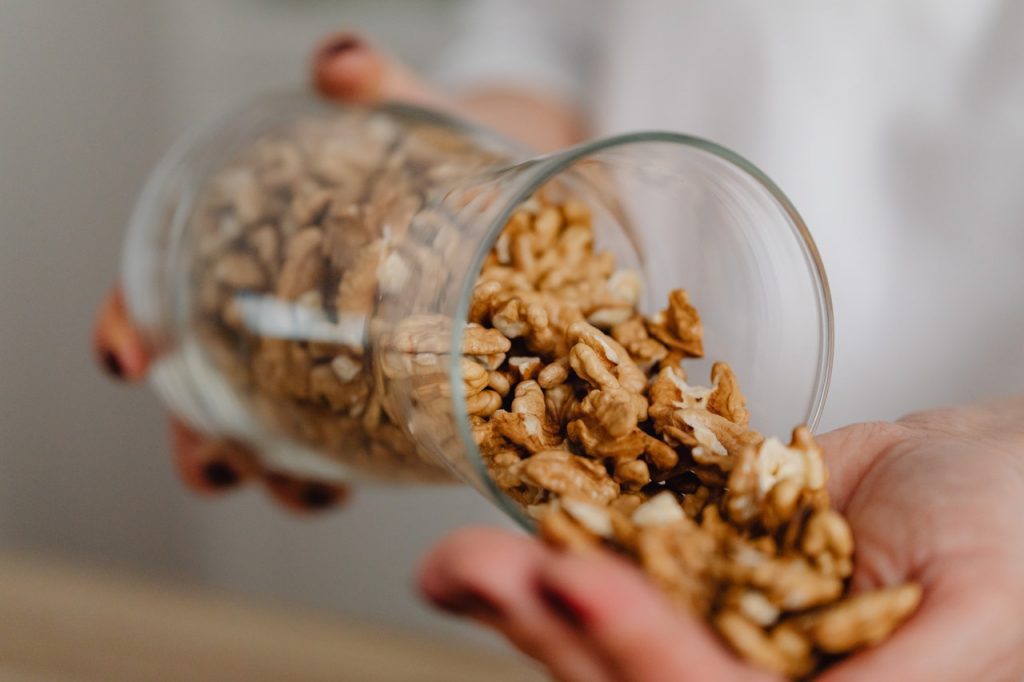
Saturated Fats
Saturated fats are solid at room temperature. Saturated fat is dense fat, is saturated with more hydrogen atoms and it has no double bonds. This is the fat mostly demonized, but as we’ll show later it is essential for growth, hormone, temperature regulation, metabolism, energy, regeneration, etc. SF is an integral part of your brain and maintains the structural integrity of certain cell membranes too.
Dietary sources of saturated fats are your full-fat dairy, like eggs, whole milk, full-fat yogurt, cheese, butter, but also plant oils like palm and coconut oil. The greatest sources are fattier meats, including red meat like beef, lamb, and pork.
Surprisingly, many of these can be healthy for you and provide you with essential fat that your body needs. For energy, structural integrity, immunity, organ function, hormone synthesis, and much more.
The bad site of fats is called, yep you guessed it, trans fats.
Trans Fats
Trans fats are unstable fats that can increase oxidative damage and chronic inflammation in your body. They go through a process called hydrogenation, which is turning liquid fats back into solid fats to extend their shelf life.
Here’s a list of the most popular trans-fat foods you’d want to avoid:
- high-sugary processed desserts like pastries, frozen cookies, ice cream, doughnuts, and refrigerated dough.
- The king of trans fat is margarine
- Processed red meats can compete as well. We are talking hot dogs, salami, bacon, beef jerky, ham, sausages, canned meat, corned beef, and similar friends.
- Deep-fried foods, these are your chicken wings, French fries, onion rings, fried pies, fried shrimp, and so on.
- Frozen pre-baked goodies or creamers: frozen pies and pizzas are up there on the tans fat list along with coffee creamers and microwave popcorn.
Truth #1 Trans Fats are bad for your health
Research shows that ruminant, CLA, and industrial trans fats will all raise LDL, the bad cholesterol which increases cardiovascular disease risk. Trans fats are pro-inflammatory and may increase TNF-alpha and endothelial dysfunction. (1) (2) (3) (4)
Guidelines for Fat Consumption
Currently, the American Heart Association recommends eating 20-35% of your total calories from fat. (5)
Also, 6% or less of total daily calories should come from saturated fat. (6)
So, if you eat around 2000 kcal to sustain weight, this would amount to 400-700 kcal from fat daily, which is around 45-77 g of fat. For saturated fat, this would be around 6% or 120 kcal from saturated fat, or 13.3 grams approximately.
Cholesterol, Meat, and Fats
Fats are important, essential nutrients that support hormone synthesis, temperature regulation, cellular integrity, energy metabolism, and much more. Healthy fats are vital to brain health and support cognitive function.
Fats also help synthesize cholesterol, which is important lipoprotein involved in sex hormone production, fat transport, and the creation of bile acids for digestion.
The standard is, that you’d want to have higher HDL “the good cholesterol” and lower LDL “the bad cholesterol”. Although not all LDL is the same, and some LDL particles actually aren’t bad for your heart, the general sentiment is – to increase the HDL-LDL ratio. This means lowering LDL and increasing HDL. Which fats can do this?
A good nutritious diet needs to include all three, polyunsaturated, monounsaturated, and saturated fats, but sure as hell exclude unstable trans fats. There are healthy and unhealthy fats.

The Effect of Fats on Cholesterol Profile
Most healthy fats will significantly increase HDL, may lower, maintain or elevate LDL slightly, and lower triglycerides. The answer to which fat is the best sadly isn’t as simple as unsaturated or saturated fat. Both can do damage, and both can be beneficial. It is about the type of these fats and foods containing them.
- For saturated fat, it would be important to exclude red processed (dried, fried) meat (salami, hot dogs, bacon) and other trans-fat foods mentioned above (pastries, frozen, pre-baked goodies).
- Instead, you’d want some grass-fed butter and beef, meat organs (liver, kidney, brain), raw whole milk, hard cheese, and whole eggs (yap, the yolk is good besides what your grandma told you).
- For unsaturated fats, focusing on high omega-3-rich foods will do the trick. These are your salmon, fatty fish and seafood (mackerel, herring, oysters, shrimp) as well as nuts, seeds (walnuts, flaxseeds, macadamia nuts), avocado, firm tofu, and the queen – extra-virgin olive oil.
Vegetable Oils and LDL
Vegetable oils like canola, safflower, sunflower, and soybean oil can turn rancid and become unstable, especially after repeated or high-heat cooking. These can increase inflammation and oxidative stress, are loaded with omega 6 and may contain trans fats. Also, say goodbye to margarine.
In most cases, the increase in LDL scares us. But as with fats, not all LDL is equal. Saturated fats don’t seem to increase dense, small LDL which is known to be bad. (7)
Research shows that substituting saturated fat with polyunsaturated can be better for improving lipid profile, and reduce LDL, total, and HDL (slightly) cholesterol in comparison to refined carbohydrates. Added sugars lead to higher LDL and total cholesterol. (8)
Saturated fat intake increases HDL cholesterol, (9) which is a good transporter of fats that can reduce CVD risk and plaque buildup in the arteries.
Not all Saturated Fat is created equal
The assumption for many years was that fat is bad, especially saturated fat. It was linked to cardiovascular diseases, so to stay away, leave your steak be. However, as we’ll see later, not all fat is made equal. Some saturated fat is essential, and even beneficial for health, go grab your grass-fed steak instead.
Imagine a scenario of a typical Texas barbeque guy drinking beer and eating tons of red meat. Or a scenario where omnivores eat sugary foods and a lot of low-quality processed meat. It doesn’t take a genius to see this isn’t great for heart health.
Research has shown that there is an association between high levels of processed red meat and cardiovascular or cancer mortality. The extra serving of red meat which the increased mortality factor by 20%, was an extra serving of bacon, hot dogs, sausage, and salami. (10)
A large meta-analysis has shown no significant association between saturated fat and an increased risk of cardiovascular disease. This one includes 347,747 subjects, humongous. (11)
We could go over endless research; the point is you can find an argument for either side. So far, it isn’t about meat or red meat consumption, in particular, that’s the highest driver of heart health issues, but many other factors. These include excessive sugar intake, stress, chronic inflammation, smoking, etc.
Also, it is about the type of meat. We all know hot dogs, salami, bacon, and their friends increase LDL and inflammation. But what about grass-fed beef, meat organs, organic chicken, or wild-caught salmon? These seem to provide great nutrients and raise HDL, the good cholesterol.
Myth #1 Saturated Fat Clogs your arteries
The saturated fat and clogged arteries association may be an oversimplification. Research shows no link between cardiovascular disease risk or mortality and eating saturated fat. (12)
As a matter of fact, replacing saturated fats with refined sugars may do even more damage to coronary diseases, research suggests. (13)
The right type of saturated fat can also increase HDL, the good cholesterol. By doing so, it can improve the TC to HDL, or total cholesterol to high-density lipoprotein cholesterol ratio, which is good for health. (14)
HDL is the good guy because it is better at transporting fats (cholesterol) in the liver, it decreases heart disease risk, and doesn’t oxidize as fast as LDL.

Myth #2 Red Meat is Bad for Your Heart
It goes without saying, processed dried red meat is very different than grass-fed beef. Most of the research linking red meat to CVD is including all meat.
In terms of choosing your protein, the difference between red and white meat consumption for cholesterol increase in this short study wasn’t significant. Both slightly increased LDL, while total and HDL weren’t affected compared to the low-fat diet. (15)
Red meat is a very nutrient-dense food, loaded with high-quality protein, essential amino acids, B vitamins, and other minerals like iron and zinc. (16)
Myth #3 Fats are non-essential
As with carbs or protein, nutrition enthusiasts want to blame it on the innocent macronutrient. Carbs are an essential source of energy. Fats are essential for regeneration, integrity, hormones, and growth as proteins are for strength, structure, bones, and muscles.
Fat is an essential macronutrient we can’t live without. Our brain is 60% fat. Fats are part of the cellular membranes. They help synthesize hormones, they’re stored for energy and used for thermoregulation. You can’t go without fats.
Fats don’t just provide structure and integrity, they aid in signaling, absorbing fat-soluble vitamins, and fighting inflammation. (17)
Myth #4 Coconut Oil is the Healthiest
While there are benefits to using coconut oil, it may not be the healthiest choice out there. Not all saturated fat is created equal, and this one is definitely controversial.
- It seems that coconut oil consumption increased total, HDL (which is good) and LDL (which is bad) cholesterol more than non-tropical veggie oil, but didn’t negatively affect inflammation. (18)
- In terms of reducing cardiovascular disease risk, unsaturated oils seem superior to coconut oil. (19)
While a teaspoon of coconut oil isn’t something to fear, it isn’t like this fat is the queen of healthy fats. There are other great options like grass-fed butter, organic ghee, and extra-virgin olive oil. So yes, you can put it on your face, cook with a non-stick spray or have a teaspoon with your chia pudding, but overdoing it may not be the best idea.
In some instances, coconut oil’s MCT or medium-chain triglycerides are known to be beneficial for fat loss, inducing ketosis, and boosting cognitive function. (20) (21) (22)
However, to get more MCT per less saturated fat for these benefits, it would be smarter to use MCT oil, rather than coconut oil.
Key Points:
- Not all saturated fat is created equal.
- Trans fats are unstable, increase inflammation, and are bad for your heart.
- Avoid foods like red processed meat (hot dog, salami, sausage, bacon) and frozen, pre-cooked pastries, margarine, and some coffee creamers.
- Grass-fed red meat and butter can provide essential saturated fats that support brain health, and may increase HDL, the good cholesterol.
- Red meat provides a great amount of iron, zinc, B vitamins, creatine, and other nutrients.
- The link between saturated fat intake and cardiovascular disease risk isn’t that strong, and may poorly control other factors like stress, smoking, excess sugar, etc., for CVD risk.
Unsaturated Fats, Omega 3 FA’s are Healthy
The general sentiment is that unsaturated fats are healthy for you. And this is true, with few exceptions. There are many plant-based fatty foods rich in unsaturated fat, known to reduce LDL cholesterol and increase HDL, cutting your risk of cardiovascular disease.
Rich sources of unsaturated fats include:
- Fatty fish and seafood like salmon, crab, mackerel, herring, oysters, shrimps
- Nuts like walnuts, macadamia nuts, almonds, pecans, hazelnuts, and
- Seeds like, flax seeds, chia seeds, and hemp seed
- Vegetable oils like peanut, canola, walnut, soybean, sunflower oil
- Foods like firm tofu, navy beans, avocados, Brussel sprouts, and cod liver oil
Unsaturated fats are very potent antioxidants, possessing strong anti-inflammatory properties. Here are your omega-3 fatty acids:
- EPA or eicosapentaenoic acid
- DHA or docosahexaenic acid
- ALA alpha-linolenic acid
Believe it or not, during my LCHF dieting I took all three of these, and the capsule looked like a humongous black oily softgell, it’s kinda sweet (until it breaks in your mouth).
These are the best compounds for brain health, cognitive function, skin health, mood balance, heart health, and inflammation.

Truth #1 Omega 3 is good for brain and heart health
Omega 3 FA’s are very well known for their potent antioxidant properties. These are the type of fats you want to eat more. You can find them in walnuts, flaxseeds, olive oil, salmon, seafood, fatty fish, firm tofu, and avocado.
Omega 3 fatty acids are known to improve brain health, support cognitive function, and in some instances are associated with improvements in memory, accuracy, and energy. (23) (24) (25)
Also, as potent antioxidants, they can fight inflammation in the brain, which is neuroprotective and may reduce neurodegeneration. Deficits in EPA and DHA levels are linked to neurodegenerative disorders. (26)
Extra-virgin olive oil, on the other hand, is not just very rich in omega-3 fatty acids and other fat-soluble vitamins like E and K, but it also lasts longer. It takes longer heating for olive oil to turn rancid in comparison to the other oily competitors. Olive oil is rich in monounsaturated fats, polyphenols, and oleic acid, known to lower cholesterol and reduce inflammation.
Omega 3 may indirectly improve cardiovascular health. It was shown that omega 3’s can improve cardiovascular outcomes and reduce cardiovascular mortality. (27)
Partially, this effect is due to omega 3’s anti-inflammatory, triglyceride-lowering, and HDL-increasing effect. ALA or Alpha-linolenic acid was in some studies shown to reduce cardiovascular event incidence by 15% in combination with fish oil. (28)

The Dangerous Side of Unsaturated Fat
As with saturated fat, not all unsaturated fat is created equal. Some unsaturated fats, especially in vegetable oils like canola oil can be detrimental to your health.
In the last few years, the consumption of vegetable oil by health-conscious people, with the demonization of saturated fat has drastically increased. Instead of cooking in butter, tallow, or lard, people turn to veggie oils. Bad news here.
Truth #2 Omega 6 to Omega 3 Ratio is high in the standard diet
The reason why is, in the standard diet omega 6 is way too high, and the ratio of omega 6: omega 3 is high. Omega 6 is pro-inflammatory, while omega 3 is anti-inflammatory. The standard American diet is way higher in omega 6 than the recommended ratio of 3:1. (29) (30)
Eating more vegetable oils will further weaken this ratio, as vegetable oils are a rich source of omega-6 FA. These are essential, but when you have too much, they might increase cardiovascular disease risk, neurodegeneration, and obesity risk, increase blood pressure and lipids, and cause inflammation and oxidative stress. (31) (32)
Truth #3 Canola Oil is Bad for you
The problem is that cooking at high heats with vegetable oils like corn, soy, sesame, canola, peanut, safflower, and sunflower oil can turn them into rancid oil fast. While after production the oil was fine, the combination of light, air, and high heat or repetitive heating can turn this fat rancid.
Vegetable oils can oxidize faster. They can easily be degraded and deteriorate, which is increasing oxidative stress in your body.(33) High consumption of oxidized oils is linked to increased inflammation and increased cancer risk. (34)
They also make up the structure of cell membranes in various places, like the brain and the nervous system. If you’re built of unstable fat, you’ll increase the odds of chronic inflammation.
The way of chemical extraction and heating to get canola oil is a process that turns canola oil rancid, it reduces omega 3’s and even increases trans fats. (35)
Key Points:
- Unsaturated fats, especially omega3 fatty acids (EPA, DHA, ALA) are considered healthy, potent antioxidants which fight inflammation.
- Omega 3 FA’s are healthy fats known to support brain health, cognition, memory, neuroprotection, improve heart health, and lower triglycerides.
- Foods like nuts, seeds, fatty fish & seafood, avocado, and olive oil are the richest omega-3 FA’s sources.
- Vegetable oils like canola, soy, corn, safflower, and sunflower oil have high omega 6 content, can be oxidized, and turned rancid faster through heating, resulting in increased inflammation and oxidative stress.
- Extra-virgin olive oil is rich in monounsaturated fats, polyphenols, and oleic acid, known to lower cholesterol and reduce inflammation
What Fats to Eat and Avoid
In terms of eating fats, there isn’t a superior type of fat. Generally, unsaturated fats like omega 3 FA’s are known to be anti-inflammatory and support health. A balanced diet should incorporate saturated and unsaturated (both poly and mono) fat.
Note
Eating fat-rich foods will contain a combination of saturated and unsaturated fats on its own. Saturated fat which was demonized, is actually essential for brain function, cellular integrity, hormonal health, etc. That being said, there are many unhealthy saturated fat options too.
Foods to Eat More
When it comes to unsaturated fats, the greatest sources include:
- Fatty fish and seafood like salmon, crab, mackerel, herring, oysters, shrimps
- Nuts like walnuts, macadamia nuts, almonds, pecans, hazelnuts
- Seeds such as flax seeds, chia seeds, and hemp seed
- Olive oil, avocados, firm tofu, cod liver oil, and Brussel sprouts
When it comes to saturated fats, the greatest sources include:
- Red grass-fed meat, grass-fed beef, lamb, or pork
- Full-fat dairy, whole milk, full-fat yogurt, whole eggs
- Grass-fed butter and organic ghee
Maybe: Non-processed, Extra virgin Coconut Oil or concentrated MCT (as a supplement for ketosis)
What Fats to Avoid
On both sides of unsaturated and saturated fat, there are foods that seem harmful.
Unsaturated fat to avoid. The vegetable oils that can turn rancid at high heating, are hydrogenated and increase inflammation and oxidative stress, also high in omega 6 FA’s include:
- Vegetable oils: Canola Oil, Safflower, sunflower, soybean, peanut oils
Trans Fat to avoid. The main group of foods to exclude or limit are trans-fat foods, which include:
- Margarine deserves his own spot as the winner
- Processed desserts like pastries, frozen cookies, ice cream, doughnuts
- Processed red meats like hot dogs, salami, bacon, beef jerky, ham, sausages, canned meat, corned beef
- Deep-fried foods like chicken wings, French fries, onion rings, fried pies, fried shrimp, and so on.
- Frozen pre-baked goodies or creamers: frozen pies, pre-made pizzas, coffee creamers, microwave popcorn.
Key Points
- Both saturated and unsaturated fats are essential for a balanced diet. There are unhealthy and healthy subtypes and foods for each fat.
- Omega 3’s (EPA, DHA, ALA) are known as potent antioxidants and are healthy fats found in avocado, seafood, nuts, seeds, and olive oil.
- Vegetable oils like canola, safflower, and soybean oils are high in omega 6, hydrogenated, and can turn rancid faster, which can increase inflammation.
- Good saturated fat from grass-fed beef, ghee, butter, and eggs can raise HDL “the good cholesterol”, plus come with loads of nutrients like fat-soluble vitamins (A,E,K,D) and minerals (iron, zinc, calcium).
- Bad saturated fats like trans fat are unstable and harmful to heart health. Since fats are part of your cellular structure (brain), bad fats can increase chronic inflammation.
- Trans fats (to avoid) are found in margarine, processed red meat (hot dog, salami, sausage), pre-baked goodies, frozen pizza, coffee creamers, and fatty pastries.
- The oversimplification that saturated fat is bad, and unsaturated fat is good doesn’t hold strong. The association between saturated fat and cardiovascular disease might be influenced by other factors like excess sugar, smoking, toxins, and inactivity.

